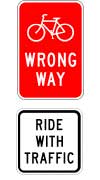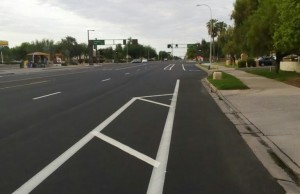[2/23/2019 update: see story about 12 y.o. Hilde Kate Lysiak says Marshal Joseph Patterson stopped her as she was biking in Patagonia, Arizona. Various issues: asked her for identification?. “failure to comply with lawful order”? “illegal to video record”? ID? ]
[2/17/2015 update: Officer Ferrin of the Ore incident has resigned. ASU released a chief’s letter and an independent investigation commissioned by ASU performed by Investigative Research Inc. (apparently through public records?) I would describe as scathing, and that corroborates most of what I thought/said below, see the lengthy news story on azcentral — There is no law requiring peds to provide an ID card (in other words his saying “Let me see your ID or you will be arrested for failing to provide ID” is wrong, see Arizona v Akins, below); there was no ‘jaywalking’, see link below to the actual jaywalking laws; there was probably no probable cause for the arrest; he didn’t “almost run her over”; 5 days earlier the officer had a similar (but non-physical) power-trip incident over a crosswalk. and on and on. The transcript, see below, confirms Officer Ferrin doesn’t understand the (ID) law]
[2015 update to the Ore incident: in an apparent about-face, ASU has moved to terminate Officer Stewart Ferrin over the matter; apparently as the result of an un-released independent review by an “outside agency”. ]
In 1999 Tucson bicyclist Enol Daniel Ortiz Jr. spent the night in jail for not having ID on him. It appears that now (since 2003) cyclists and other non-motorists have no legal obligation to carry identification.
 The update in 2014 is due to the unusual case of Ersula Ore, an English professor at ASU. She was apparently “jaywalking” when she got into an altercation with ASU police. From what I can see this on College Ave, somewhere north of University Dr. This is a public street in the city of Tempe (there seems to be some confusion and many erroneous comments about this; this location is not “on campus” or somesuch). Tempe’s codes for pedestrians are here; ASU is NOT in the “central business district”, the more-restrictive “jaywalking” code only applies in the CBD so it leads me to wonder if she was really jaywalking at all. Jaywalking codes, real or imagined, are frequently used to assert superiority by motorists (the police officers were driving cars) over pedestrians.
The update in 2014 is due to the unusual case of Ersula Ore, an English professor at ASU. She was apparently “jaywalking” when she got into an altercation with ASU police. From what I can see this on College Ave, somewhere north of University Dr. This is a public street in the city of Tempe (there seems to be some confusion and many erroneous comments about this; this location is not “on campus” or somesuch). Tempe’s codes for pedestrians are here; ASU is NOT in the “central business district”, the more-restrictive “jaywalking” code only applies in the CBD so it leads me to wonder if she was really jaywalking at all. Jaywalking codes, real or imagined, are frequently used to assert superiority by motorists (the police officers were driving cars) over pedestrians.
Continue reading “Are Cyclists Required to Carry ID? Are Pedestrians? Updated 2014”





